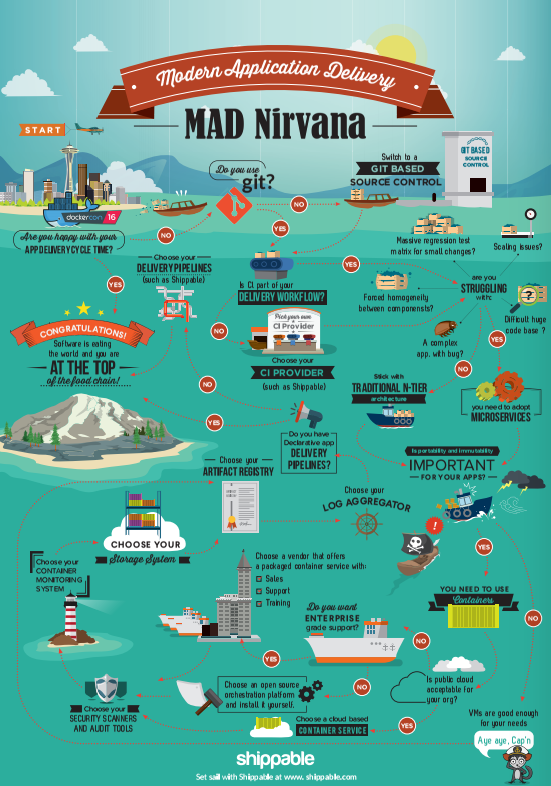Shippable has released an infographic to help decision makers in software teams who want to increase their teams’ productivity and speed up their application delivery cycle time.
This infographic is designed to help developers navigate through the modern application delivery landscape based on their needs, and it details the tools and technologies that could help them at every step of the process.
Today, applications and cloud native apps are built to leverage containers and microservices architecture, according to CEO of Shippable Avi Cavale. Taking this approach allows companies to provide more advantages, like lower code complexity or greater app portability. This however, creates one problem: Most app delivery pipelines are highly custom and tightly coupled with tools and technologies exclusive to the app.
(Related: Platform9 introduces Kubernetes support)
“With microservices, each service is heterogeneous and needs its own delivery pipeline, which means you need a much larger number of pipelines than you needed with traditional apps,” said Cavale. “This adds a lot of burden on developers, and the effort needed to create and maintain these pipelines often exceeds the time they spend on building their microservices.”
To fix this problem, Cavale said that companies can leverage unified app delivery pipelines, which are declarative and heterogeneous, and which enable bimodal IT with support for both cloud native and traditional applications.
Cavale said that companies should also know that the container ecosystem is richer and more mature than they think, and that it is “growing at a faster pace than any disruptive technologies seen before.
“As more teams adopt containers in production, they have the luxury of choosing between a wide variety of tools and platforms, and this infographic is an attempt to map them out,” he said.






